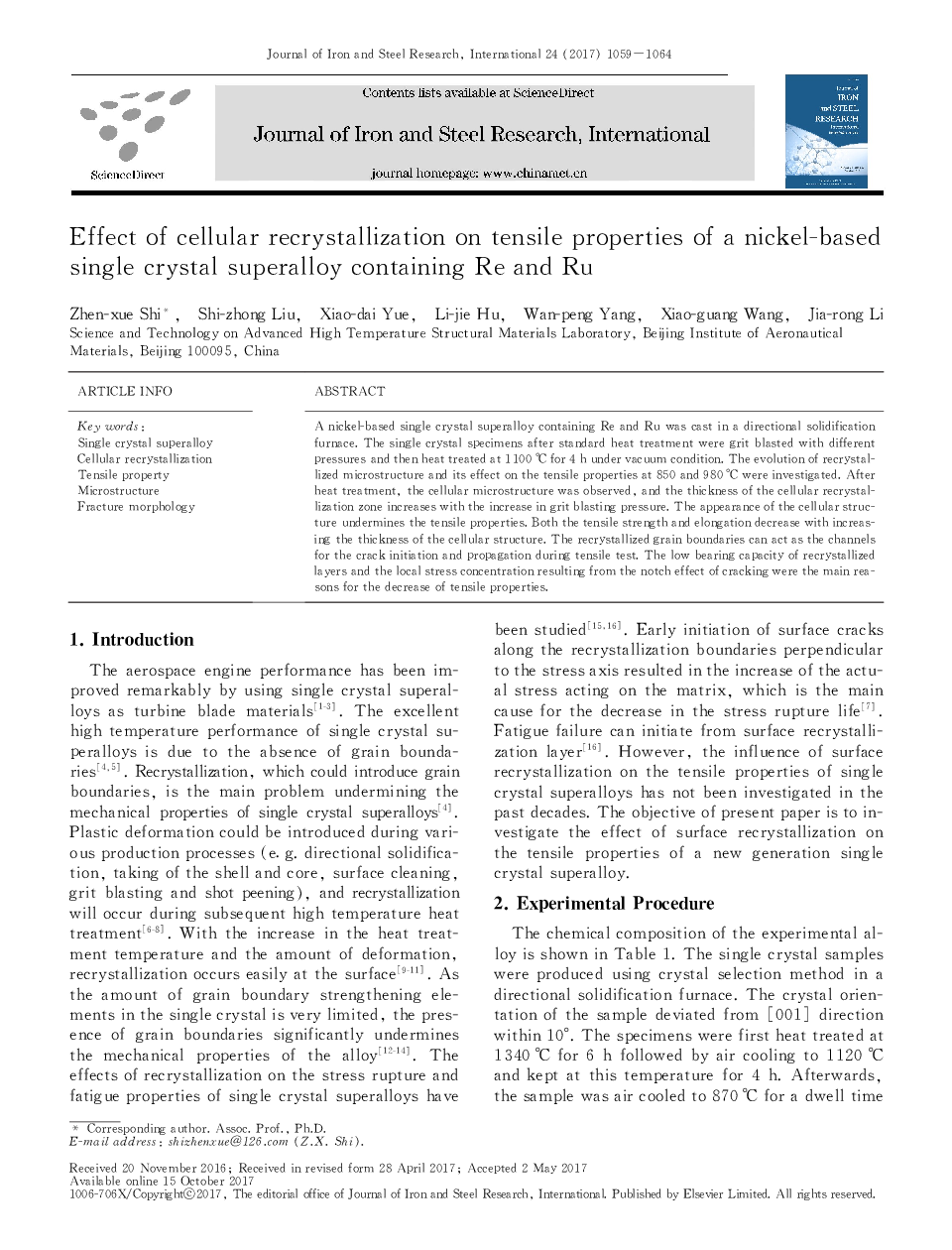| Article ID | Journal | Published Year | Pages | File Type |
|---|---|---|---|---|
| 8004180 | Journal of Iron and Steel Research, International | 2017 | 6 Pages |
Abstract
A nickel-based single crystal superalloy containing Re and Ru was cast in a directional solidification furnace. The single crystal specimens after standard heat treatment were grit blasted with different pressures and then heat treated at 1100 °C for 4 h under vacuum condition. The evolution of recrystallized microstructure and its effect on the tensile properties at 850 and 980 °C were investigated. After heat treatment, the cellular microstructure was observed, and the thickness of the cellular recrystallization zone increases with the increase in grit blasting pressure. The appearance of the cellular structure undermines the tensile properties. Both the tensile strength and elongation decrease with increasing the thickness of the cellular structure. The recrystallized grain boundaries can act as the channels for the crack initiation and propagation during tensile test. The low bearing capacity of recrystallized layers and the local stress concentration resulting from the notch effect of cracking were the main reasons for the decrease of tensile properties.
Related Topics
Physical Sciences and Engineering
Materials Science
Metals and Alloys
Authors
Zhen-xue Shi, Shi-zhong Liu, Xiao-dai Yue, Li-jie Hu, Wan-peng Yang, Xiao-guang Wang, Jia-rong Li,
